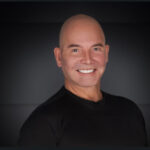Doctors of osteopathic medicine (DOs) are fully qualified physicians equipped to provide comprehensive healthcare, addressing your health needs from head to toe. As Dr. William Burke, dean of the Ohio University Heritage College of Osteopathic Medicine, explains, “We are fully licensed and certified physicians who have a few extra tools in our toolkit.”
Many DOs choose to specialize in primary care, serving as internists, family doctors, and pediatricians. Others pursue diverse specialties including psychiatry, neurology, and cardiovascular surgery. Dr. Burke emphasizes the integration of DOs within the medical community, stating, “MDs and DOs work side by side in virtually every hospital in the country.”
Understanding the Core Principles of Osteopathic Medicine
A defining characteristic of a Doctor of Osteopathic Medicine is their commitment to examining the root cause of health issues. Dr. Shannon Scott, clinical associate professor at Midwestern University Clinics Arizona, highlights this approach: “We focus on prevention by looking at how your lifestyle and environment are affecting your health.” This involves a comprehensive assessment of various aspects of a patient’s life. “In a typical visit, I sit down and listen to what’s going on with your home, family, and work,” Dr. Scott elaborates. “I’m interested in your mental, physical, and spiritual health.”
This holistic perspective is central to osteopathic medicine. It encompasses a 360-degree view of a patient’s life and health, aiming to alleviate symptoms, prevent future health problems, reduce stress, and support the body’s innate healing capabilities. While some DOs may explore complementary and alternative treatments, osteopathic medicine itself is firmly rooted in mainstream medical practice.
Osteopathic Manipulative Treatment (OMT): A Hands-On Therapy
A cornerstone of osteopathic medicine is the understanding of the interconnectedness of the body’s systems. To address health concerns, DOs utilize osteopathic manipulative treatment (OMT), a hands-on technique designed to diagnose and correct musculoskeletal imbalances that may be contributing to a patient’s symptoms. This therapeutic approach is effectively used to treat a range of conditions, from common ailments like low back pain to headaches and sinus problems.
Dr. Burke uses a familiar analogy to illustrate this concept: “You know the old song, ‘The knee bone’s connected to the thigh bone’? Well, it’s true,” he says. “The body is a unit, and if one thing is not functioning normally, it can affect everything else.”
For instance, in the case of chest pain, a DO will conduct a thorough physical examination and order necessary tests to rule out serious conditions such as pneumonia or heart disease, similar to the approach of an MD. However, a DO will also investigate the musculoskeletal system to identify potential contributing factors. “It might be that a rib is slightly displaced, and we can correct that,” Dr. Burke explains, highlighting the use of OMT to address structural issues. If the diagnosis reveals a more serious condition like heart disease, the patient will receive standard medical treatment comparable to that provided by an MD.
Similarly, when addressing lower back pain or leg pain, a DO will assess factors like leg length discrepancies and gait mechanics to identify and treat underlying musculoskeletal imbalances.
While OMT is a core component of DO training, it’s important to note that not all DOs utilize it in their practice. OMT is particularly effective in relieving pain, improving mobility, and promoting the body’s natural healing processes. Some DOs also incorporate OMT in the management of conditions such as asthma, sinus disorders, menstrual pain, and migraines.
In conclusion, Doctors of Osteopathic Medicine offer a comprehensive and holistic approach to healthcare. They are fully licensed physicians who not only diagnose and treat illnesses but also emphasize prevention and utilize hands-on techniques like OMT to address the interconnectedness of the body and promote overall well-being.

